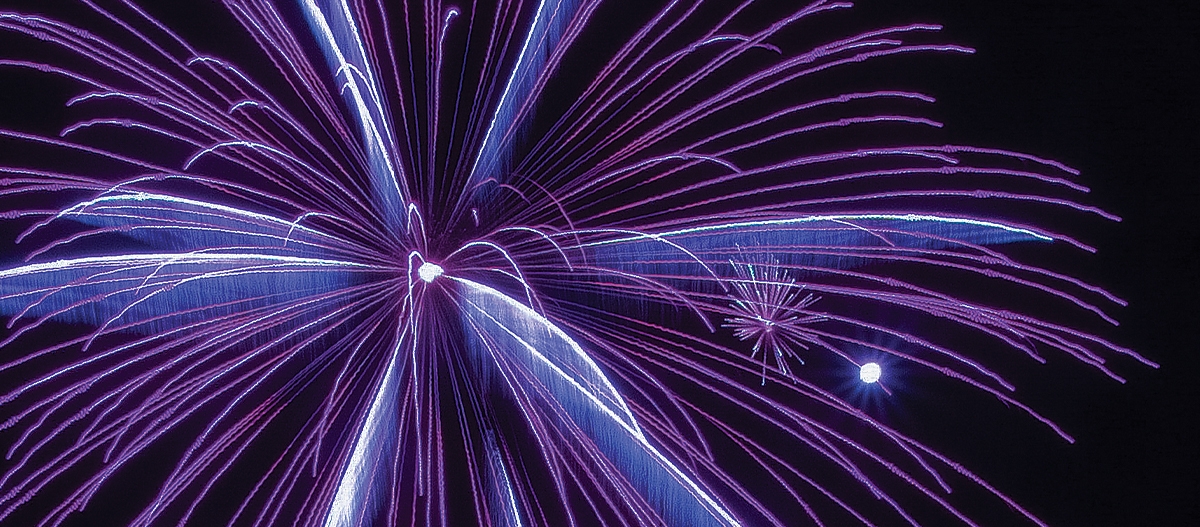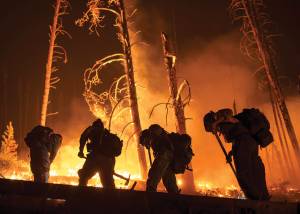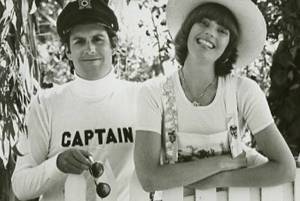By DIANNA TROYER
Imagine planning an elaborate celebration for months and toiling for days just before the event, only to see it literally go up in smoke in a half hour.
Every 4th of July, firefighters from the central Idaho town of Mackay and countless other communities choreograph fireworks shows, gladly watching their labors of love disappear in a kaleidoscope of colors, trailing wisps of smoke. Those who shoot a show manually instead of remotely are usually so busy, they don’t even have time to watch it.
“Watch this one,” said Ken Day, 62, assistant fire chief for the volunteer South Custer Fire Department. He grinned and tapped his computer keyboard at the fire station in Mackay to summon a video of one of the most popular and deceptive fireworks—the floating red lanterns.
“We always try to have a wow factor, and this was it a few years ago. People liked it so much, we always have it.”
Instead of dazzling, the floating lanterns looked like dormant duds as if they had fizzled out in the water after they fell. As spectators anticipated the next firework, suddenly the water ignited with dozens of red flares shooting upward, like meteors in reverse.
In spring, with snow still blanketing the Lost River Valley, Day envisioned the summer show and ordered more than 700 rounds, ranging from 2-½ to 6 inches. Their names offer hints of their appearance—weeping willows, chrysanthemums, palm trees, comets, and stars. The salutes only make a resonating boom.
Shooting the show at the Mackay Reservoir north of town doubles the entertainment value.
“The fireworks reflect in the water, plus everyone gets to hear them twice, because they echo so loudly off the cliffs on the other end of the dam,” he said. “Every year, we take notes and are always learning more about the choreography of a show. We aren’t doing anything complicated, but we try to find ways to enhance the show every year.”
While spectators ooh and aah, most cannot envision what goes on behind the scenes.
Daryn Moorman, 45, said he had no idea of the complexity of the event until he began helping a couple of years ago.
“It’s fascinating to see all the work that goes into shooting a fireworks show. For us, it’s a community service. We enjoy it when people tell us they appreciate what we’ve done.”
Choreographing a show is more complicated than simply lighting a fuse.
“The different sizes take varying amounts of time to rise, so you have to coordinate the timing if you want the different sizes to go off at the same time,” Day said.
They use manual electronic switches on a control panel to set off the fireworks, which have been wired with long fuses and placed in mortar tubes. The tubes are secured in wooden racks.
“It takes all of us in the department a few days to wire each one,” Day said. “We work inside the fire hall and load them onto a trailer.”
About 6 p.m. on the day of the show, the trailer filled with the evening entertainment is pulled to a campground adjacent to the dam.
“We spread them out about 100 feet along the edge of the reservoir,” he explained. “It can be dangerous, so we’re extremely methodical, to prevent accidents. Some firefighters elsewhere were badly burned because static electricity from their clothes accidentally set off the fireworks. We also cover the tubes, so falling embers won’t ignite them prematurely.”
A key point of their methodical planning is to always expect the unexpected. Members of the local fire department and local U.S. Forest Service firefighters watch for and extinguish falling embers to prevent brush fires from starting.
“Last year, we had a very slight breeze that blew many 3-inch and 4-inch shells back to explode over us, even though we had attempted to get the shells farther out over the water,” Day said. “We did all of our water-effect cakes and our multi-shot cakes from the boat dock remotely.”
Planning for the $4,000 show begins months before summer, when donation jars are distributed at local businesses.
“We usually raise enough money, but if we’re a little short by May when the fireworks are ordered, we use a fund that is strictly donations,” Day said. “No taxpayer money is used for the show.”
After the show ends, their labor of love is still not over.
“Sometimes a firework doesn’t go off, so we leave it for about 30 minutes, then remove the fuse and put it in water,” Day said. “We’ll come back the next morning to clean up and talk about what we’d like to do for next year’s show. We want spectators to say afterwards, ‘I’ve never seen anything like that before.’” — ISI









